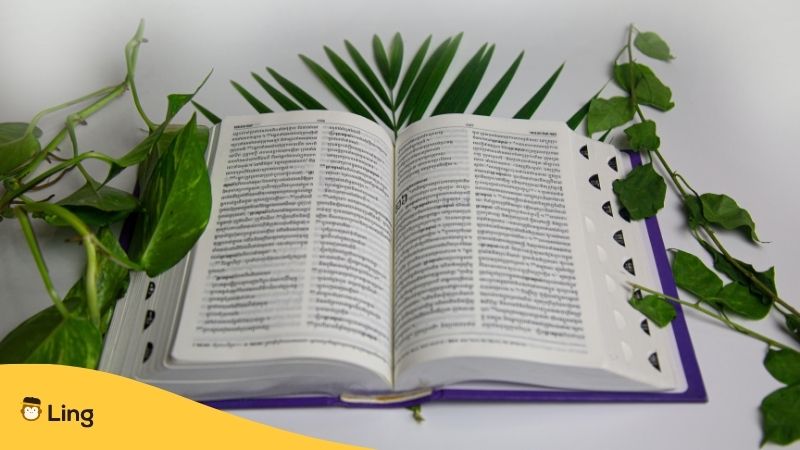Are you curious about the fascinating history of Khmer language? Well, get ready to travel back in time and discover the linguistic roots of this ancient language. From the majestic temples of Angkor to the bustling streets of Phnom Penh, the Khmer language has played a vital role in shaping Cambodia’s rich cultural heritage. But how did it all begin? Join us on a journey through centuries of history and explore the origins, evolution, and unique features of the Khmer language in this post!
The Khmer Language is spoken by approximately 15 million people in Cambodia, Thailand, and Vietnam. It has a distinctive squiggly script that to newbies to the language may initially seem entirely indecipherable. However, with a little effort, those curls and swirls will soon make sense. But for you to be motivated to learn this language, we understand that learning more about its history can help. With that said, we have detailed below everything you need to know about this Asian language. Let’s begin!
History Of Khmer Language
Early History
The Khmer language is a member of the Mon-Khmer family of languages. The name “Khmer” comes from the Sanskrit word “Khemaraja,” which means “warrior king.” This name was given to the people by their neighbors because they were known as fierce warriors able to conquer their enemies with weapons made out of bronze or iron.
The Khmer alphabet has 33 consonants and 23 vowels. The vowel sounds are pronounced differently depending on whether they appear at the beginning or end of words – this makes it easier for native Khmer speakers to distinguish between similar-sounding words such as ‘mah’ ម្តាយ (mother) vs. ‘maa’ មក (to come).
Pre-Angkorian Period
The Khmer language is an Austroasiatic language belonging to the Mon-Khmer branch. The first people to speak the language were the ancestors of today’s Mon-Khmer tribes. These tribes migrated southward into Southeast Asia around 2,500 years ago and settled in Cambodia.
The earliest written records of the ancient Khmer empire are from around 200 CE. These inscriptions are found on stone tablets and steles at Angkor and other temple sites throughout Cambodia. The oldest inscription dates back to 802 CE, but most date between 937 CE (the reign of Jayavarman II) and 1191 CE (the reign of Jayavarman VII).
Angkorian Period
During the Angkorian period, the Khmer language spread throughout Southeast Asia after the Khmer Empire dominating the region. It was used in inscriptions and documents written on stone, wood, metal, and palm leaves. The Khmer script was also used to write Sanskrit and Pali texts such as Buddhist scripture, medical treatises, and law books.
The Khmer script is thought to have developed from an ancient form of Brahmi script, which originated in India around 300 BC. The earliest inscriptions date back to around AD 683-889, but it is believed that this script was already in use during Funan times (1st century AD).
Post-Angkorian Period
The old Khmer language has undergone many changes over the years, but there was a time when it was considered dead. This happened during the post-Angkorian period when France colonized Cambodia. The French brought aspects of their culture, imposing it on the locals, including the French language.
Due to the French colonial restrictions, Khmer script was nearly eradicated from Cambodian society. However, Cambodian Buddhist monks, at the time, made significant efforts to preserve the language, leading to its survival into the modern era.
Modern Khmer Language
The modern Khmer language has been influenced by French and English, but it still retains its original structure.
The status of the Khmer language today can be described as vulnerable, meaning that there are fewer native speakers of Khmer than there used to be and that its use is declining due to other languages, such as English, becoming more popular among people who live in Cambodia.

Khmer Writing System
The Khmer writing system is one of the world’s most unique and intricate scripts. With its distinctive curls and swirls, the Khmer alphabet is a visual feast for the eyes. Each character comprises a series of lines and curves that combine to form complex shapes and symbols. It has been used for more than 2,000 years. The distinctive script was developed over time by monks. These monks translated religious texts into Khmer from Sanskrit, Pali, and other ancient languages from the Indian subcontinent.
The use of the alphabet for the writing system has changed over time. It originally consisted only of consonants but later added vowels to make reading easier for those outside the monkhood who didn’t understand the ancient language well enough to read it without the added vowels. Today, many versions are used throughout Cambodia, including western Khmer, southern Khmer, northern Khmer, and middle Khmer. How Khmer speakers use the official language can differ depending on where they live or go to school or university.
Khmer Language Grammar
The grammar of the Khmer language has undergone significant changes throughout its long history. In its earliest forms, Khmer had a relatively uncomplicated grammar with few verb tenses and a focus on word order to convey meaning. However, the language has evolved over time and adopted new grammatical structures from neighboring languages such as Pali and Sanskrit. This resulted in the addition of complex verb conjugations, noun declensions, and other grammatical features that have made Khmer highly expressive and nuanced.
In addition to its ancient roots, this Asian language has incorporated French and English elements due to Cambodia’s colonial past and global influences. This has led to a unique and dynamic fusion of linguistic styles, with Khmer retaining many complex grammatical structures while incorporating new vocabulary and idioms from Western languages.

Khmer Language Vocabulary
The Khmer vocabulary contains many loanwords from Sanskrit and Pali, both ancient Indian languages. These words were brought to Southeast Asia by Buddhist monks during the first millennium CE. The influence of other tongues can also be seen in some words borrowed into Khmer from languages around the globe, including Chinese, French, and English.
Keep Khmer Alive With Ling App

The future of the Khmer language is uncertain, but some steps can be taken to ensure that it thrives for generations to come. An easy way to do this is to download the Ling app and start learning Khmer today. As well as guiding you step by step through all aspects of Khmer, the Ling app provides hundreds of blogs like this that give fascinating insights into Cambodia’s history, culture, and people. Why not try Ling today by clicking on Google Play or App Store?































